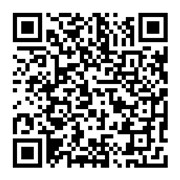were是be动词的过去式,用来描述过去的情况
在2020年的春天,全球范围内都经历了一场前所未有的挑战。新冠病毒的爆发迅速席卷了各个国家,改变了人们的生活方式。街道变得空旷,商店关门,人们被迫待在家中。学校也纷纷转向线上教学,老师们不得不快速适应新的教学模式,学生们则要适应在家学习的挑战。
在这个时期,人们展现出了极大的韧性和互助精神。医护人员冒着风险奋战在抗疫一线,社区志愿者帮助那些需要帮助的人,普通民众遵守防疫规定,减少外出。这些行动不仅保护了自己,也为疫情防控工作做出了贡献。
同时,科技的发展也在这场疫情中发挥了重要作用。远程办公、在线购物、在线娱乐等成为人们日常生活的一部分。人们学会了利用科技来保持社交联系,支持经济活动,同时也意识到了科技在未来的重要性。
总的来说,2020年的春天是一个充满挑战和变化的时期,但人们通过团结合作和科技创新,共同度过了难关。这段经历不仅改变了我们的生活,也让我们更加珍惜平凡的日子,更加重视健康和安全。


